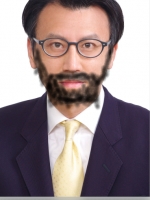In reaching this decision, the judge found both direct and induced copyright infringement claims to be plausible. The induced infringement claim against Stability AI argued that by distributing their model “Stable Diffusion” to other AI providers, the company facilitated the copying of copyrighted material. In allowing this claim to proceed, the judge noted a statement by Stability’s CEO, who claimed that Stability compressed 100,000 gigabytes of images into a two gigabyte file that could “recreate” any of those images. The judge also pointed to the plaintiffs’ presentation of academic papers demonstrating that training images could be reproduced as outputs from AI products by using precise prompts.作出此裁定,法官認為直接以及誘使侵害著作權主張皆具說服力。對Stability AI 聲明其誘使侵害部分,主張散布Stable Diffusion模型給其他人工智能提供者,該公司加速有著作權著作被重製。允許本訴訟續行,法官提及Stability執行長的一篇聲明,其說道:Stability壓縮100,000千兆位元組圖像至2千兆位元組檔案,其可再創作檔案中任何圖像。法官亦指出,原告提出的學術著述,可證藉由精確文字輸入,訓練中的圖像能從人工智能產物重製成輸出。
As for direct infringement claims against Stability AI and others, Judge Orrick found the plaintiffs’ model theory, which argues that the AI product itself constitutes an infringing copy because it embodies the transformations(變形物或變體) of the plaintiffs’ works, and distribution theory, which asserted that distributing the AI product is equivalent to distributing their copyrighted works, to both be plausible. When moving these claims forward, Judge Orrick noted that these theories depended on whether the plaintiffs’ protected works were found within the AI systems in some form and would be addressed again at the summary judgment stage.
以主張直接侵權對抗Stability AI 等;依原告所述之模型理論,其力主人工智能產物本身構成侵權之重製物,因為其將原告之著作具體化成原物所形成之變體(亦及人工智能生成者係從原物衍生出之變形物,還是有利用到原創);另依據散布理論,原告主張散布人工智能生成產物等同散布原告等之著作,上開兩論述均說服Orrick法官,使得Orrick法官為有利原告等之裁定。隨著本案繼續前行,Orrick法官提到,這些理論依憑於是否原告等受保護之著作於人工智能系統中以某些形式而存在,此將會在即決判決程序中再次被檢視。
Going Forward未來走向
With Judge Orrick’s August 12th decision, Andersen v. Stability AI will move into the discovery stage with the trial set to begin on September 8, 2026. This ruling opens the door to a deeper examination of how AI companies use copyrighted works to train their systems and whether these practices violate existing copyright laws. If the plaintiffs ultimately succeed in proving their claims, this case could set a transformative legal precedent that will reshape the way AI-art is regulated in the United States. As the legal battle unfolds, this case will undoubtedly set a guiding tone for how courts interpret the relationship between AI innovation and intellectual property rights.
隨著Orick法官8月21日的裁定,Andersen起訴Stability AI 一案,將於2026年9月8日開始審理程序中的證據開示。法官的裁定就人工智能如何利用有著作權之著作去訓練其系統,以及這些實務運作是否違反現行著作權法,開啟了深度審查的一扇大門。假設原告最終能證明他們的主張,本件將能建立一個轉捩點的判決先例,其將重塑人工智能藝術在美國受規範的方式。當法律戰開打,本件毫無疑問就法院如何詮釋人工智能革新與智慧財產權間關係建立一個指南針。
